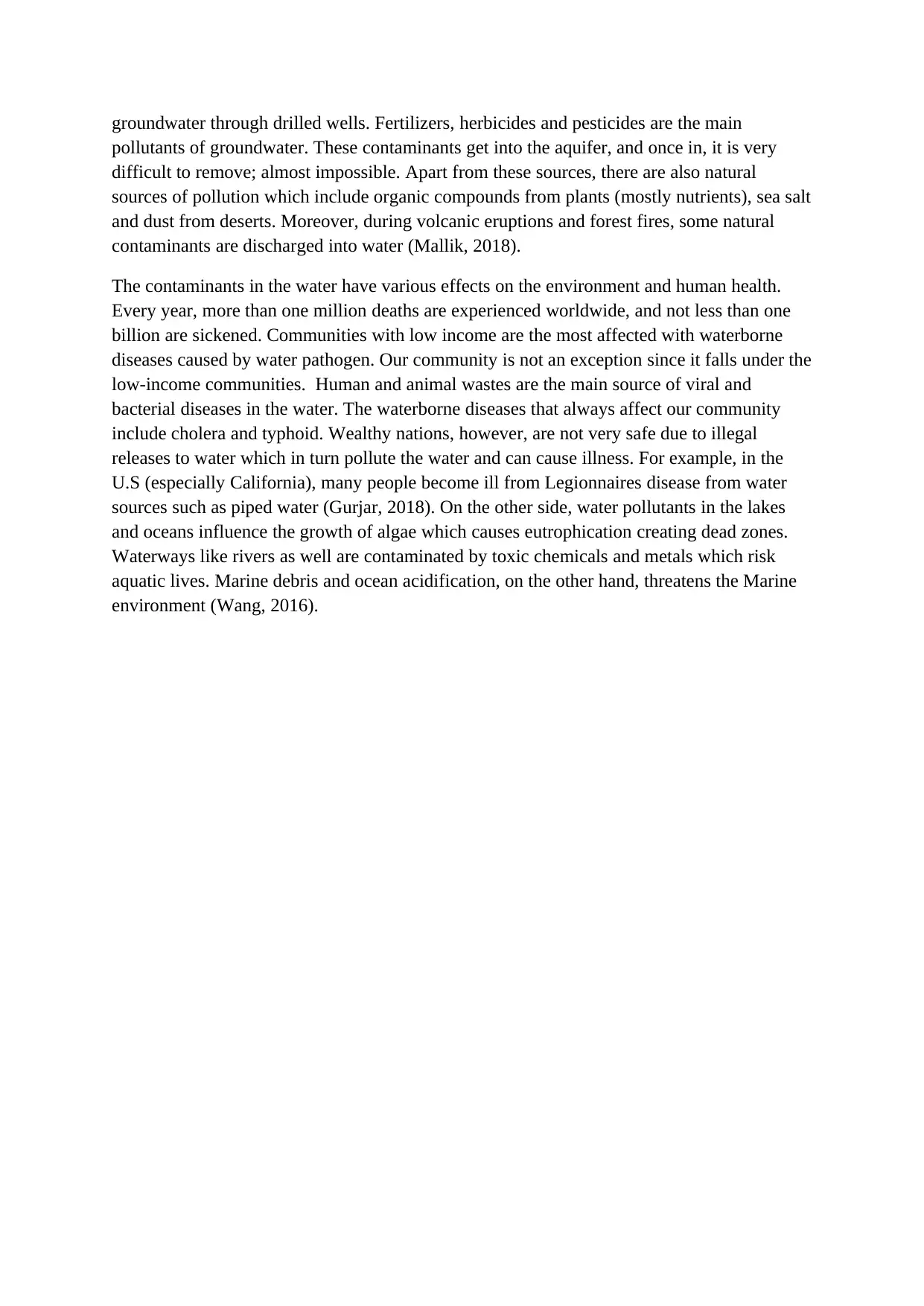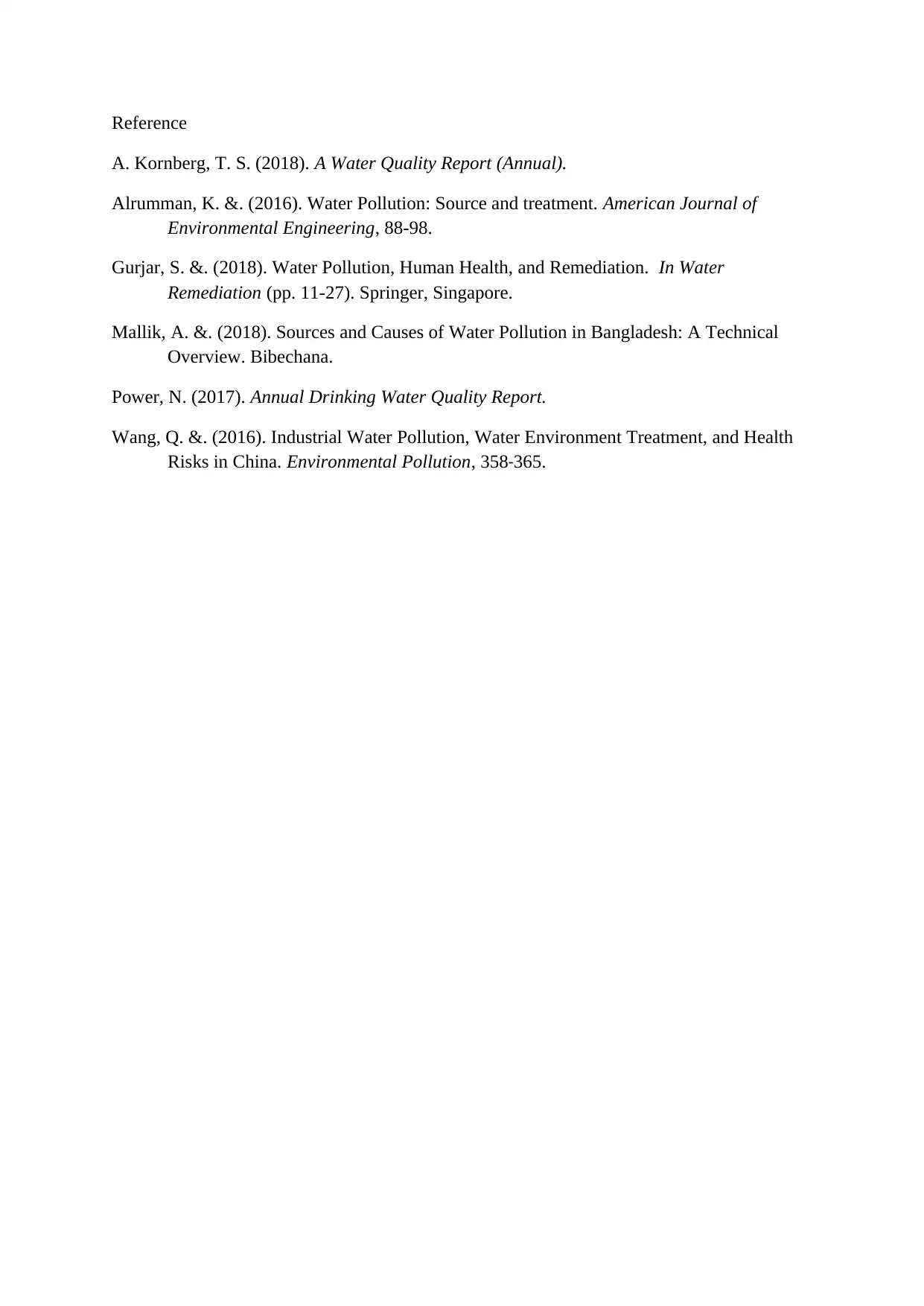Detailed Report: Community Water Quality, Contamination, and Solutions
VerifiedAdded on 2022/09/13
|3
|1067
|19
Report
AI Summary
This report provides an analysis of a community's water quality, emphasizing the importance of safe drinking water and adherence to Environmental Protection Agency (EPA) standards. The report examines the community's water supply system, which serves over 1000 households, and reviews annual water quality reports from the past two years. These reports detail the sources of water (drilled wells, ponds, springs, and rivers), the types of contaminants (microbial, organic, and inorganic compounds), and the levels of contaminants compared to regulatory standards. The report highlights that while there were no violations, there were instances where the water quality was below standard but was rectified promptly. It also discusses the major issue of water pollution, identifying point sources (industrial discharges), non-point sources (agricultural activities), and natural sources (plant matter, sea salt, and volcanic eruptions) of contamination. The report further examines the effects of water pollution on both the environment and human health, including waterborne diseases and the impact on aquatic ecosystems, referencing various studies and reports on water quality and pollution. It underscores the need for measures to control pollution and ensure the provision of safe water for the community.
1 out of 3










![[object Object]](/_next/static/media/star-bottom.7253800d.svg)